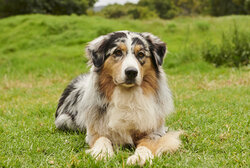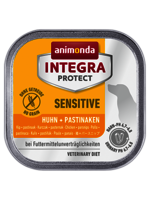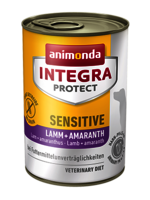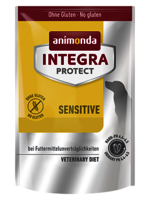When a dog is scratching itself
If a dog scratches itself frequently and its skin or fur have changed, or if it has open wounds, you should determine the cause.
Itchiness can cause dogs a lot of discomfort. Animals often injure themselves when scratching, and these injuries, in turn, can become infected and inflamed. Significant itchiness represents a problem which must be taken seriously and should be investigated by a vet.
Causes of scratching
It often makes sense to create a list of possible causes, based on the evident symptoms, changes to the skin and the animal’s background. Not all itchiness is caused by fleas, for example, although fleas are very often part of the problem and flea treatment often comprises part of the therapy.
Causes can also include food allergies, fungal infections, bacteria, foreign bodies, neurological disorders, hormonal imbalances and tumours. Sometimes several factors can be causing problems at the same time, for example if the skin has been previously damaged by a fungal infection, and bacteria subsequently also infect the area.
Treating chronic cases
A systematic approach is especially important in difficult or chronic cases. You should. In Germany, the Chamber of Veterinary Surgeons for each federal state can provide pet owners with a list of vets who are specialised in the diagnosis and treatment of skin conditions (dermatology).
Food allergies
Recognising a food allergy is very difficult and only possible by means of an elimination diet. In an elimination diet proteins are used which the dog not yet had much contact with. For this reason it is important to have as precise information as possible about what the dog has been used to eating. Generally, protein sources from types of animals which are rarely used are relevant here. In the 1980s and 1990s the lamb used in allergy diets was very rarely used in dog food which meant it was a very good animal protein for the elimination diet. These days, however, it is increasingly used and this is why allergy diets contain less and less lamb. Regional differences should also be taken into account. In England, for example, mutton and lamb are often fed to pets, and the incidence of allergies to these meat proteins is also more common there.
The elimination diet should be implemented over a period of at least 10 weeks. There is no exact determination of the cause. It must always be decided on a case-by-case basis. In addition to home-made meals, top quality industrially-produced foods with selected protein sources can also be used. They are particularly well suited for the long-term treatment of dogs as they contain all essential nutrients in satisfactory quantities - for example in the animonda Integra Protect Sensitive food.
You may also like this

Allergies in dogs
Common allergies and treatment options

Dietary fibre for dogs
Dietary fibre provides energy and supports digestion

Fleas in dogs
An infestation of fleas must be treated comprehensively

Exclusion diet for your dog
How to properly perform an exclusion diet




